Easy Cornmeal Fried Fish Without Egg Wash

Crispy Southern Fried Fish is marinated in tangy buttermilk, coated in a Creole seasoned cornmeal mixture, and then, deep-fried to golden brown perfection. Pair with classic sides such as crunchy coleslaw, creamy cheese grits, and delectable southern hush puppies, and you have an authentic Southern fish fry menu that is sure to please your pickiest eaters!
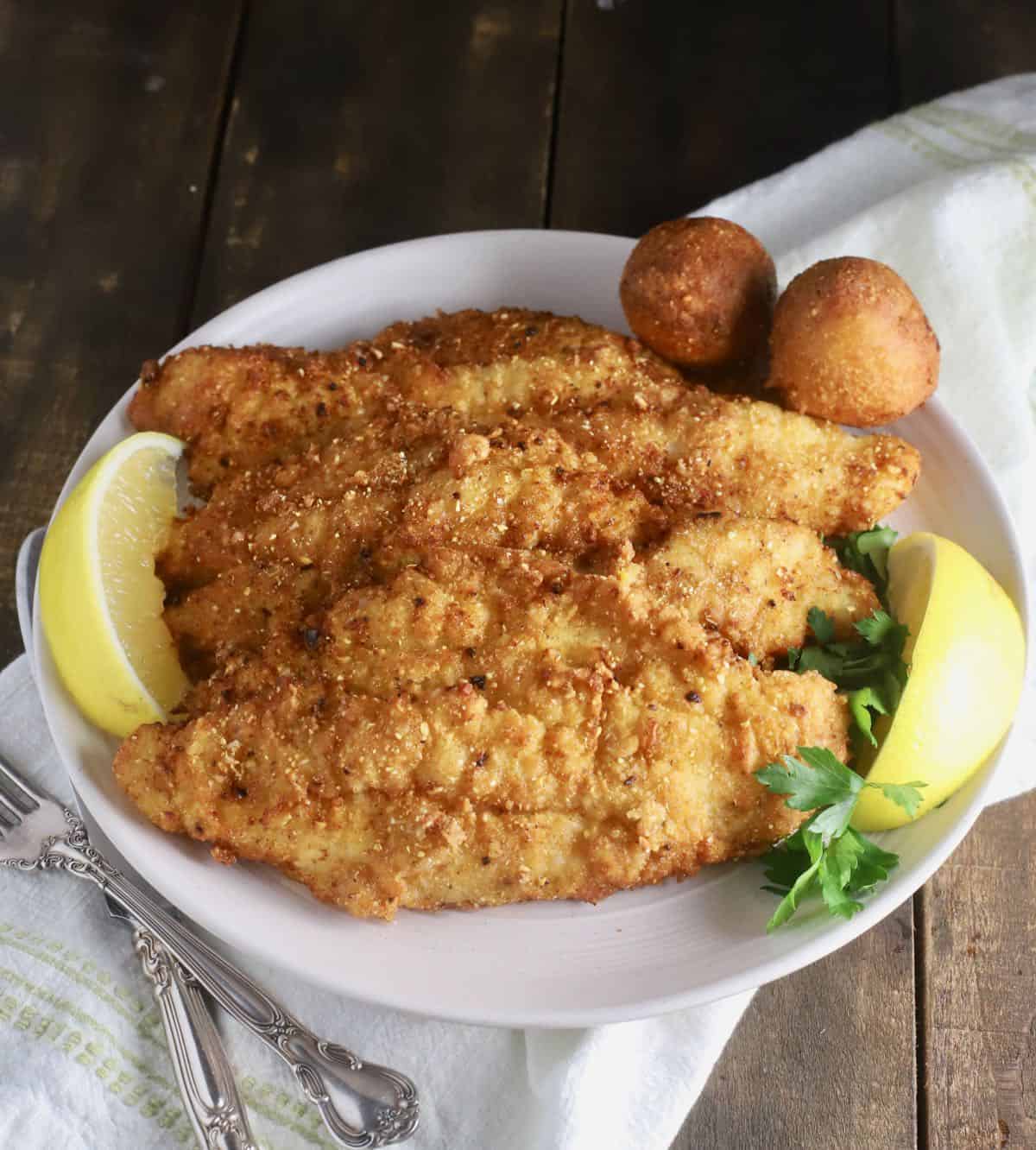
In the South, fried catfish reign supreme and is the most common fried fish seen at fish fries and seafood restaurants. Deep-fried with a blissfully crunchy coating, freshwater catfish have a sweet, mild taste, and the fillets are always juicy and tender.
These days most catfish are farm-raised, but if you are lucky enough to have access to a freshwater river or lake, they are easy and fun to catch. Some folks think wild catfish have a muddy taste, but a quick soak in buttermilk will take care of that.
Catfish are also found in saltwater, but the saltwater cats are considered a nuisance or trash fish, and most fishermen throw them back. However, I have heard that the larger Gaftop or Sail Cats are good to eat, although I haven't personally tried them. Speaking of saltwater, if you like this recipe, I know you will also love my recipes for Crispy Fried Grouper and Crispy Fried Oysters.
Here's what you will need:
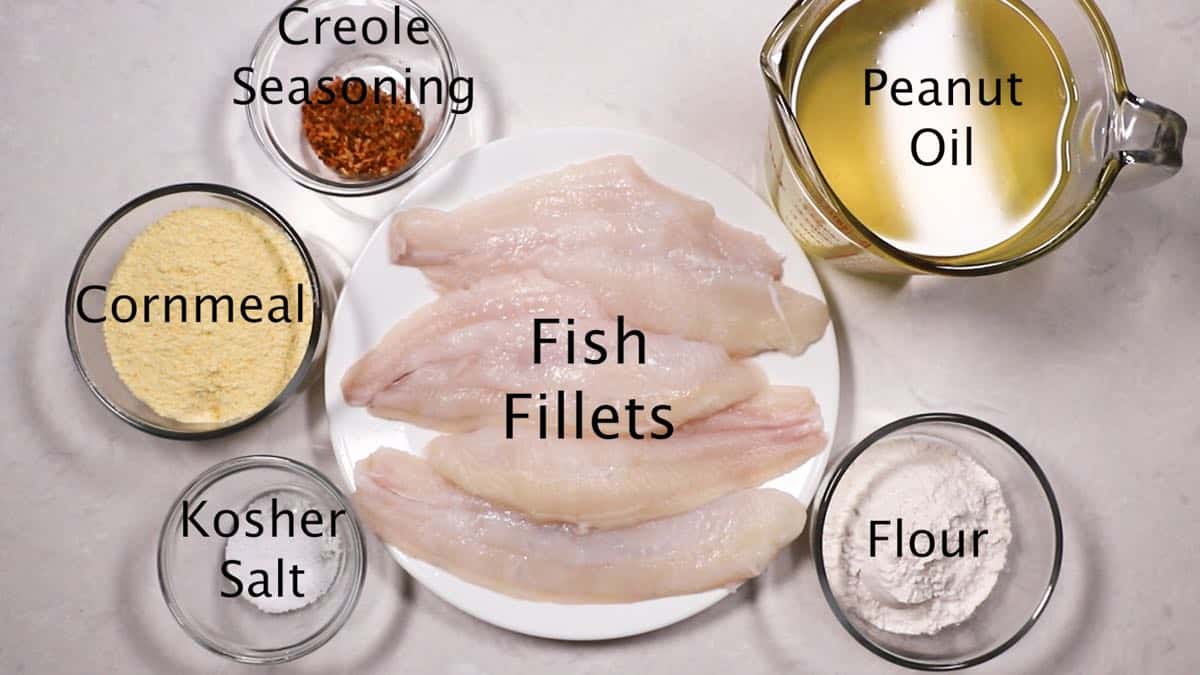
You only need a few ingredients to make Southern Fried Fish, and they are:
- Fish fillets: are at the heart of this dish. Be sure your fish is fresh and doesn't smell fishy. Fish should smell like the ocean.
- Buttermilk: an essential ingredient that adds flavor and helps ensure that the cornmeal coating adheres to the fish.
- Cornmeal: you can't have cornmeal coating without cornmeal, and this is what gives these fried fish fillets their crunch.
- All-purpose flour: just a bit of flour helps ensure that the cornmeal coating sticks and does its job of sealing in the fillets' delicious juices.
- Creole seasoning: because a bit of heat and spice makes everything tastier.
- Kosher salt: enhances the flavor of the fish and the coating.
- Peanut oil: my recommended oil for frying because of its high smoke point (450 degrees) and neutral taste.
Here's how to make it:
- Pour the buttermilk into a shallow container or large sealable plastic bag and add the fillets. Allow them to soak for about 30 minutes.
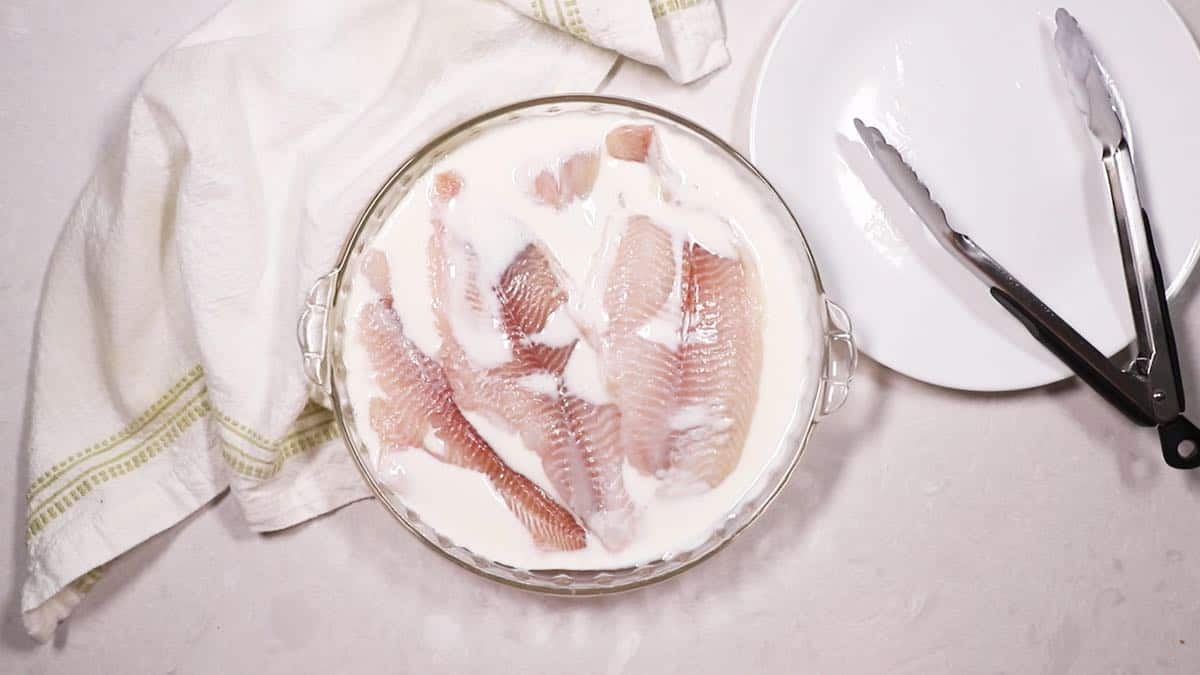
- While the fillets are soaking, place the cornmeal, flour, Creole seasoning, and salt in a large shallow pie plate or bowl and use a whisk or fork to combine.
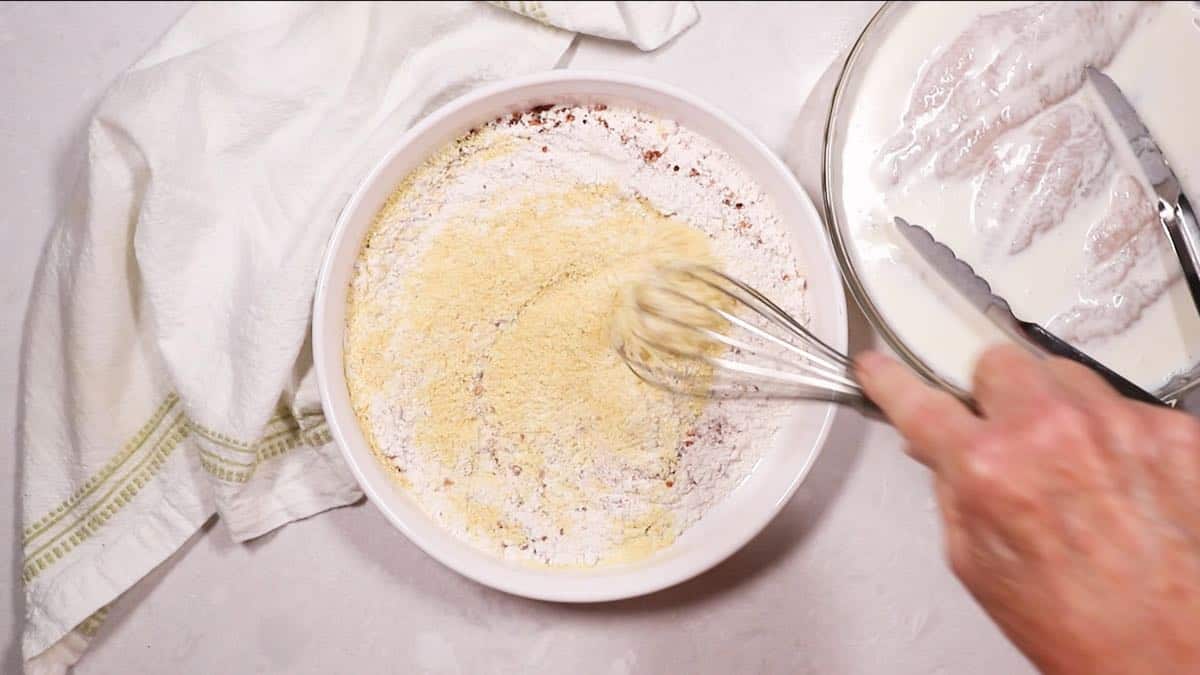
- Take a fillet and let any excess buttermilk drain off, then dredge in the cornmeal mixture. Make sure the entire fillet is coated. Place on a wire rack to rest. Repeat with the other fillets.
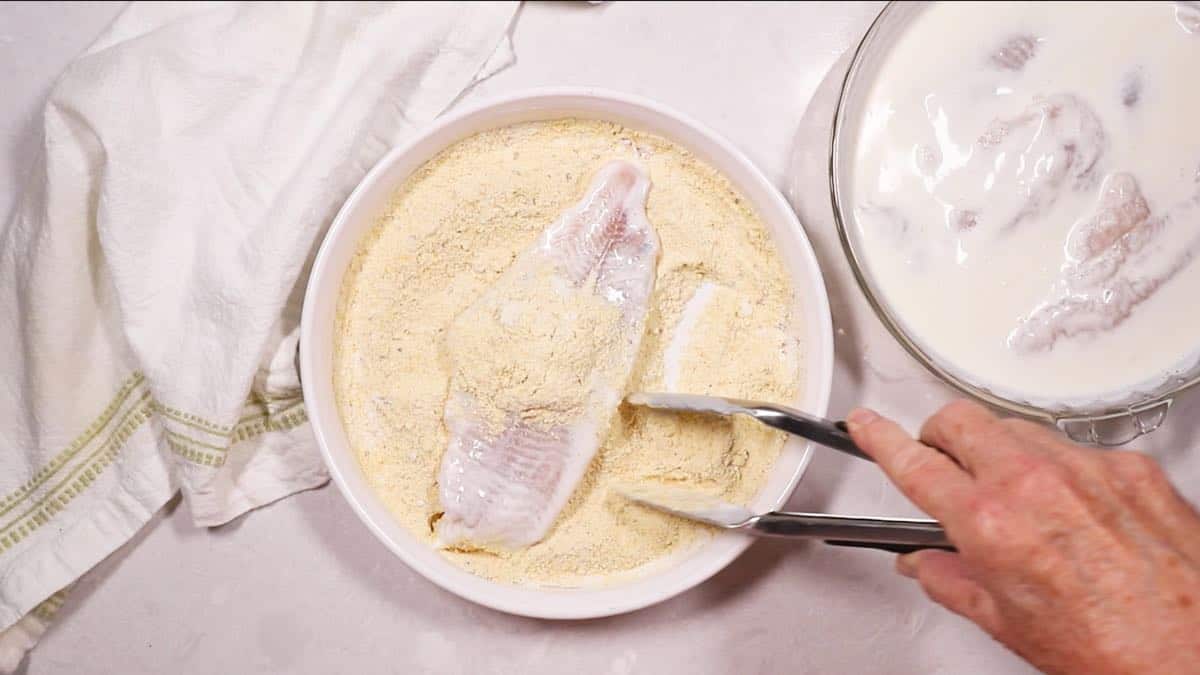
- Place a cast-iron skillet or Dutch oven over medium-high heat and add the peanut oil.
- Use a candy or deep-fry thermometer to test the oil temperature and bring it up to 375-degrees. When the oil has reached the correct temperature, carefully add the first fillet, If the temperature drops, wait until it has come back up before adding another fillet. Do not crowd the fish and only cook one or two fillets at a time. Keep the heat at 375-degrees by increasing or decreasing the heat.
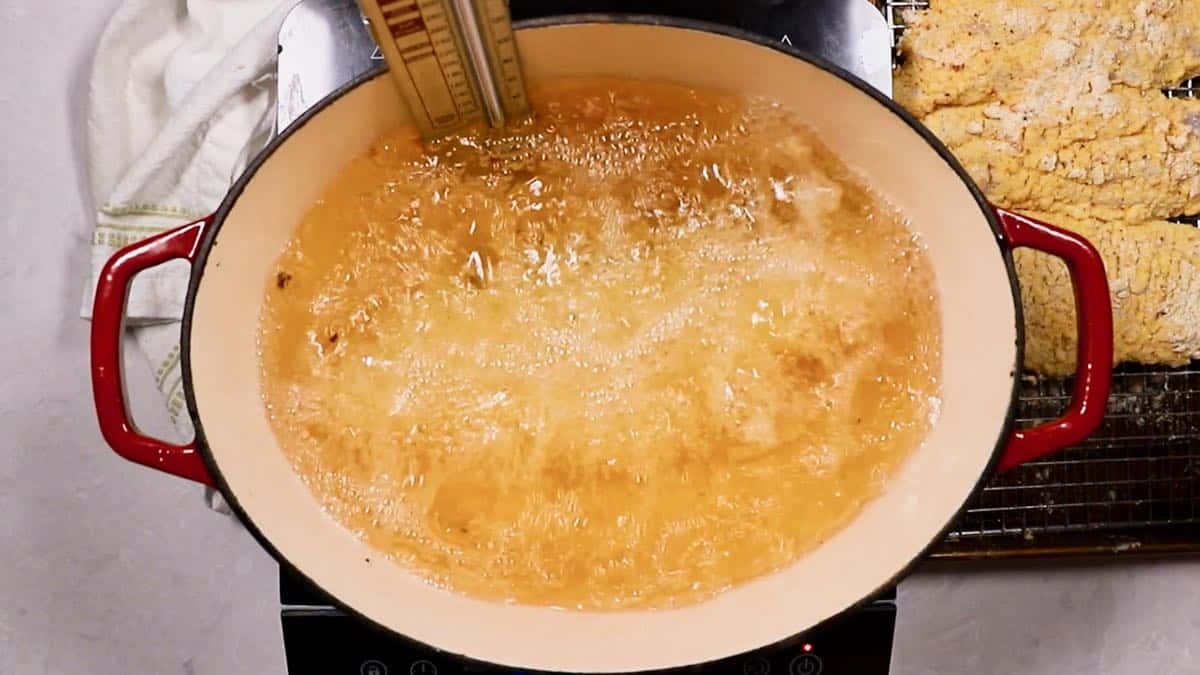
- Let the fish fry for two to three minutes or until they are floating and golden brown. Use a spider skimmer or fish spatula to remove the fillets from the oil.
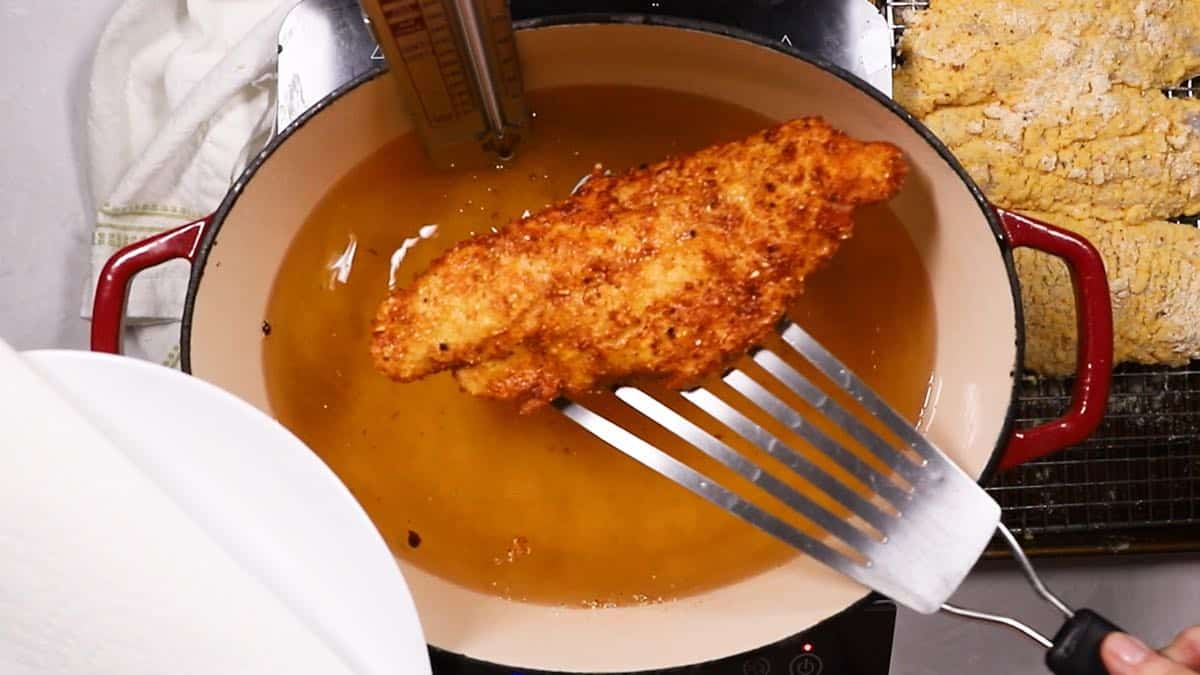
- Place on a wire cooling rack to drain. Repeat with the other fillets.
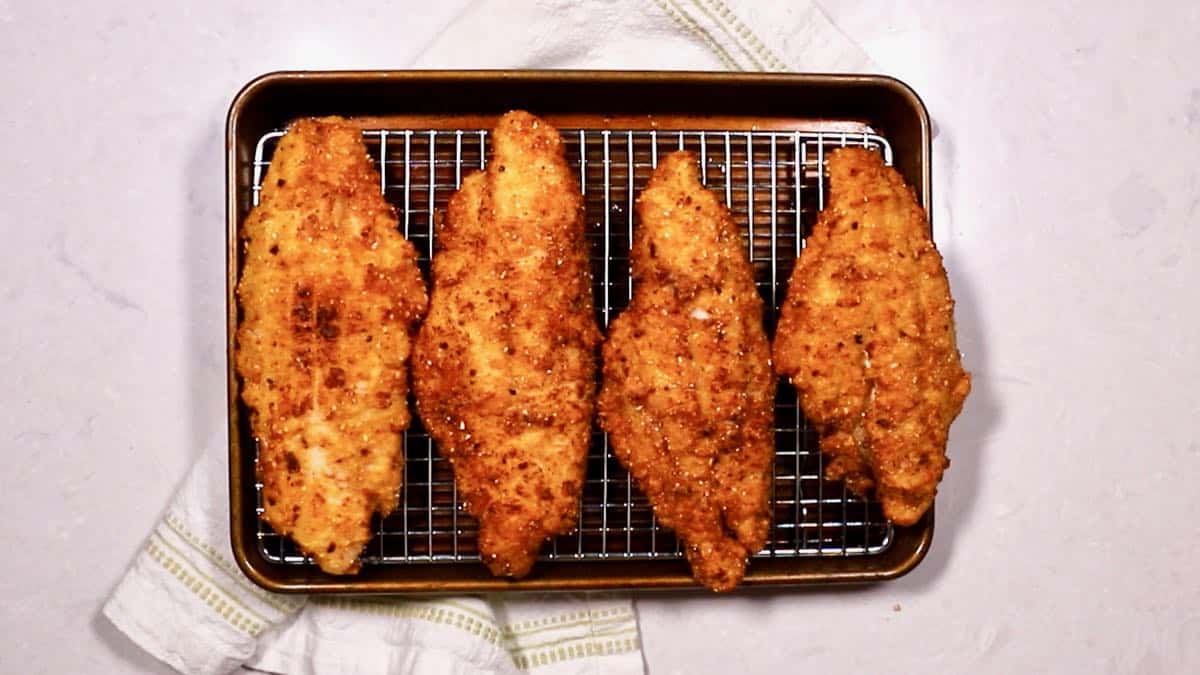
- Serve immediately with catsup, tartar sauce, remoulade sauce, or cocktail sauce.
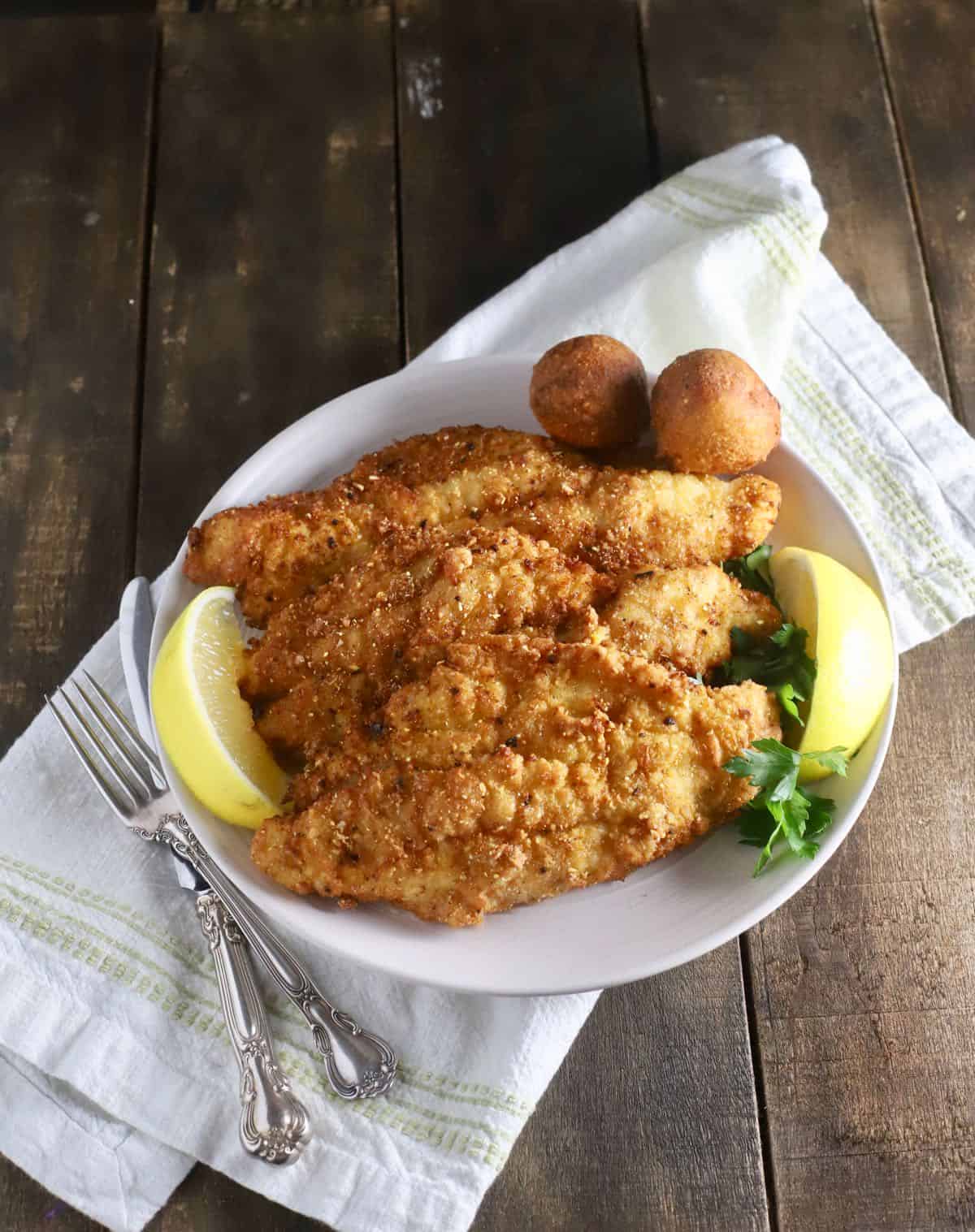
Frequently asked questions:
How do you keep the fish crispy?
Placing the fried fish fillets on a wire rack instead of letting them drain on paper towels helps keep them crispy.
What's the best fish to fry?
In the South, freshwater catfish tops the list, but any firm white fish such as Spanish mackerel, grouper, flounder, tilapia, cod, whiting, speckled trout, and red snapper are also delicious.
What can I use instead of flour to fry fish?
Flour, along with cornmeal, helps the fish to fry up crispy, but if you are looking for a gluten-free alternative, use a gluten-free flour along with the cornmeal, or use cornmeal by itself. A finer grind instead of a stone grind works best if you are only using cornmeal.
What's the best oil for frying?
I always use and recommend peanut oil because it has a high smoke point. However, I have experimented with rice-bran oil with good results. Rice-brain oil supposedly has several health benefits, but at this time, it is not readily available in grocery stores, and it is more expensive than peanut oil
What's the best temperature for frying?
I always aim for between 360 and 380 degrees. If your temperature is too low, you will have greasy oil-soaked fish, and if it's too hot, the cornmeal coating will burn before the fish is cooked. If you don't already have a candy and deep-fry thermometer, do yourself a favor and get one. They are inexpensive and a game-changer when frying fish.
Can you reuse cooking oil?
The short answer is yes! To do this, save the original oil container. Once you've finished frying, let the oil cool completely. Place a fine-mesh strainer or even better a piece of cheesecloth over the mouth of a funnel to catch any bits of food and slowly and carefully pour the oil back in. Store in a cool, dry place.
Sharon's tips:
- Letting the fish fillets sit with their coating on a wire rack for a few minutes before cooking helps the cornmeal coating stay put while the fillet is frying, for the ultimate crispy coating.
- For the best results, don't skip the step of letting your fillets soak in buttermilk before coating them with the cornmeal mixture.
- I often recommend making your own buttermilk by mixing milk with vinegar or lemon juice for baking, but you need to use real buttermilk for the best flavor in this recipe.
- If you want to keep grease splatter down to a minimum, use a large high-sided stockpot or Dutch oven instead of a cast-iron skillet and use a wire screen splatter guard while your fish is frying.
- Leftover fried fish can be stored covered in your refrigerator for three to four days. The coating will not be as crispy as it was, but the fish will still be delicious. I like to eat mine cold; my husband prefers to heat his in the microwave for about 30 seconds. Leftover fish can also be used to make fish tacos or homemade fish cakes.
- When purchasing your fish, try to find boneless, skinless fillets that are between one-half and three-quarters of an inch thick. Fresh is best, but frozen works too. If your fillets are frozen, be sure to let them thaw before using them and pat dry with a paper towel before you soak them in the buttermilk. Water and hot oil do not play well together.
- If your fillets are large, and especially if this is your first time frying fish, I recommend that you cut them up into small pieces or nuggets. They will be easier to manage.
More seafood recipes:
We are lucky and fresh seafood is available all year long in our area. We take full advantage of this and often have seafood several times a week. If you like seafood as we do, I hope you will check out some of my other favorite fish recipes:
- Blackened Mahi-Mahi
- Crispy Fried Oysters
- Crispy Pan-Fried Shrimp
- Panko-Coated Oven-Baked Grouper
- Blackened Grouper
- Cheesy Creole Shrimp Toast
- Grilled Grouper with Mango Salsa
If you need more menu ideas, you can find all of my seafood recipes by clicking this link.
★ If you make this dish, please leave a comment and give this recipe a star rating. I would love to know how you liked it!
Thank you for visiting Grits and Pinecones!
Southern Fried Fish Recipe
Crispy Southern Fried Fish is first marinated in tangy buttermilk, then coated in a Creole seasoned cornmeal mixture, and finally, deep-fried to golden brown perfection. Pair with classic sides such as crunchy coleslaw, creamy cheese grits, and delectable hushpuppies and you have an authentic Southern fish fry menu that is sure to please your pickiest eaters!
Servings 4 servings
Calories 396 kcal
- 4 catfish fillets skinless, boneless, and about ½ to ¾ inches thick
- 2 cups buttermilk
- 1 ¼ cups yellow cornmeal
- ¾ cup all-purpose flour
- 1 tablespoon Creole seasoning I like Zatarains
- 1 teaspoon kosher salt
- 1 quart peanut oil
-
Pour the buttermilk into a shallow container or large sealable plastic bag and add the fillets. Allow them to soak for about 30 minutes.
-
While the fillets are soaking, place the cornmeal, flour, Creole seasoning, and salt in a large shallow pie plate or bowl and use a whisk or fork to combine.
-
Take a fillet and let any excess buttermilk drain off, then dredge in the cornmeal mixture. Make sure the entire fillet is coated. Place on a wire rack to rest. Repeat with the other fillets.
-
Place a cast-iron skillet or Dutch oven over medium-high heat and add the peanut oil.
-
Use a candy or deep-fry thermometer to test the oil temperature and bring it up to 375-degrees. When the oil has reached the correct temperature, carefully add the first fillet, if the temperature drops, wait until it has come back up before adding another fillet. Do not crowd the fish and only cook one or two fillets at a time. Keep the temperature at 375-degrees by increasing or decreasing the heat.
-
Let the fish fry for two to three minutes or until they are floating and golden brown.
-
Use a spider skimmer or fish spatula to remove the fillets from the oil. Place on a wire cooling rack to drain. Repeat with the other fillets.
-
Serve immediately with catsup, tartar sauce, remoulade sauce, or cocktail sauce.
This recipe calls for catfish, but any firm white fish such as Spanish mackerel, grouper, flounder, tilapia, cod, whiting, speckled trout, and red snapper can be substituted.
Letting the fish fillets sit with their coating on a wire rack for a few minutes before cooking helps the cornmeal coating stay put while the fillet is frying, for the ultimate crispy coating.
For the best results, don't skip the step of letting your fillets soak in buttermilk before coating them with the cornmeal mixture.
I often recommend making your own buttermilk by mixing milk with vinegar or lemon juice for baking, but you need to use real buttermilk for the best flavor in this recipe.
If you want to keep grease splatter down to a minimum, use a large high-sided stockpot or Dutch oven instead of a cast-iron skillet and use a wire screen splatter guard while your fish is frying.
Leftover fried fish can be stored covered in your refrigerator for three to four days. The coating will not be as crispy as it was, but the fish will still be delicious. I like to eat mine cold; my husband prefers to heat his in the microwave for about 30 seconds.
When purchasing your fish, try to find boneless, skinless fillets that are between one-half and three-quarters of an inch thick. Fresh is best, but frozen works too.
If your fillets are frozen, be sure to let them thaw before using them and pat dry with a paper towel before you soak them in the buttermilk. Water and hot oil do not play well together.
If your fillets are large, and especially if this is your first-time frying fish, I recommend that you cut them up into small pieces or nuggets. They will be easier to manage.
Calories: 396 kcal | Carbohydrates: 26 g | Protein: 32 g | Fat: 18 g | Saturated Fat: 4 g | Cholesterol: 100 mg | Sodium: 672 mg | Potassium: 754 mg | Fiber: 3 g | Sugar: 1 g | Vitamin A: 630 IU | Vitamin C: 2 mg | Calcium: 46 mg | Iron: 2 mg
Please leave a comment below and/or give this recipe a rating. On Instagram? Take a picture and tag @gritsandpinecones or #gritsandpinecones!
More Seafood
-
Blackened Grouper
-
Mediterranean Grouper
-
Crab Stuffed Shrimp Recipe
-
Broiled Halibut with Gremolata
Reader Interactions
Source: https://www.gritsandpinecones.com/southern-fried-fish/
0 Response to "Easy Cornmeal Fried Fish Without Egg Wash"
Post a Comment